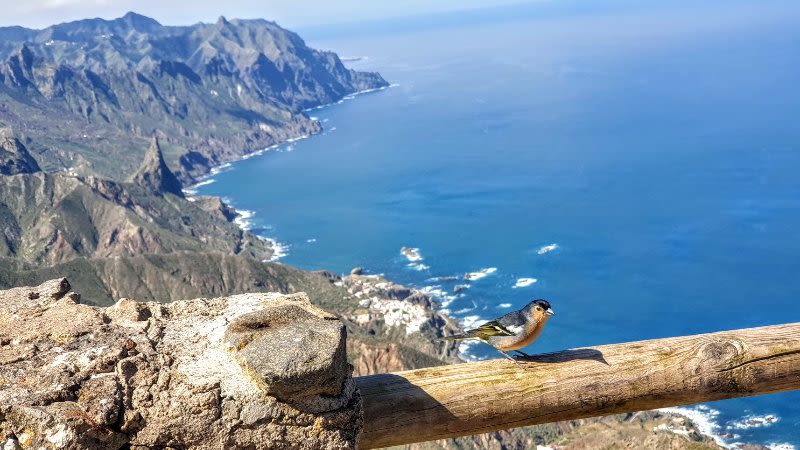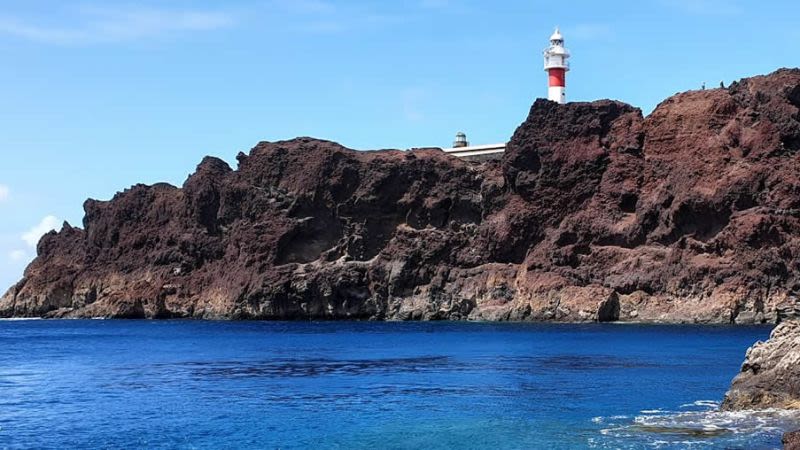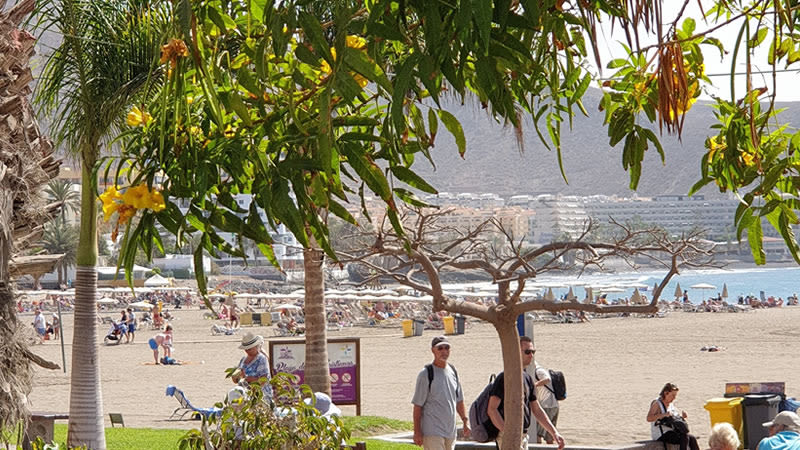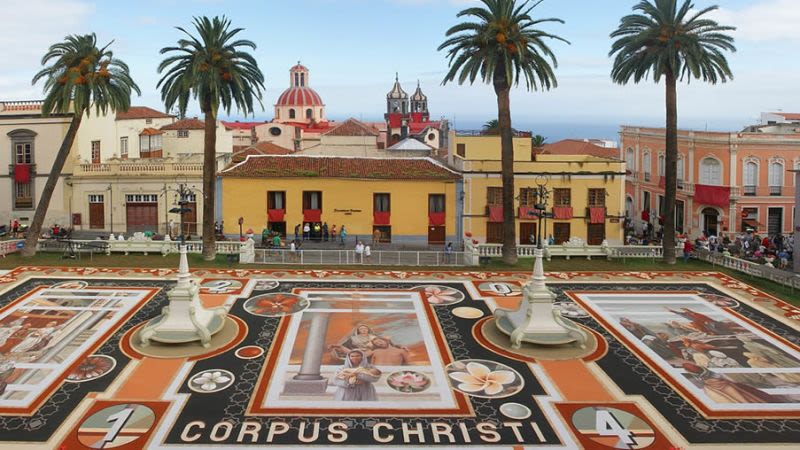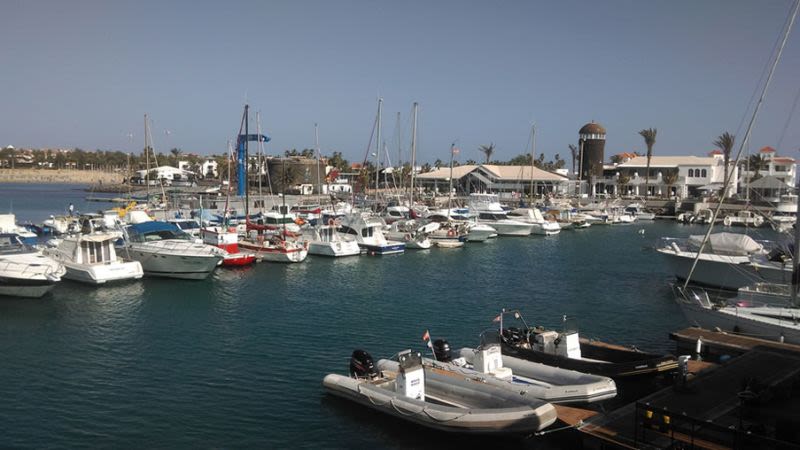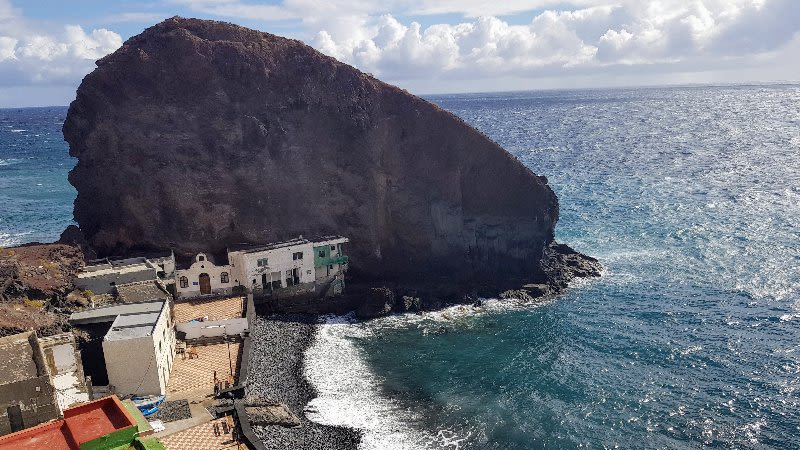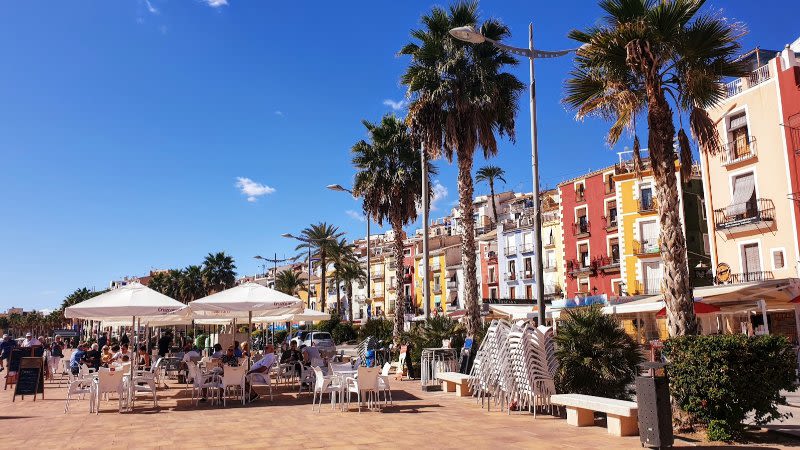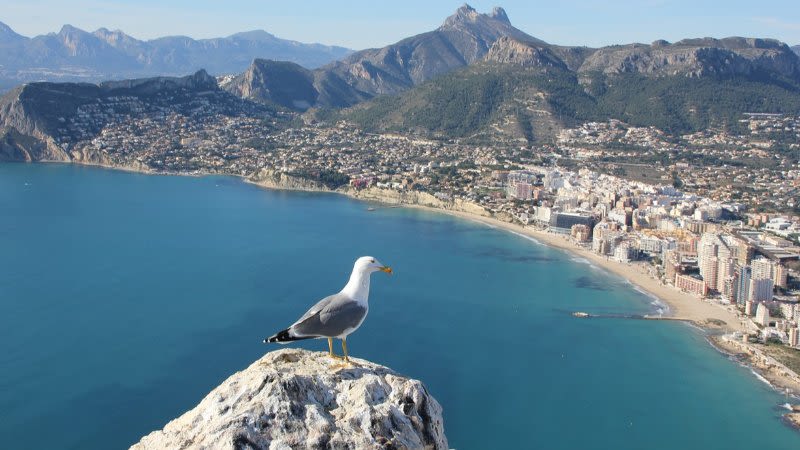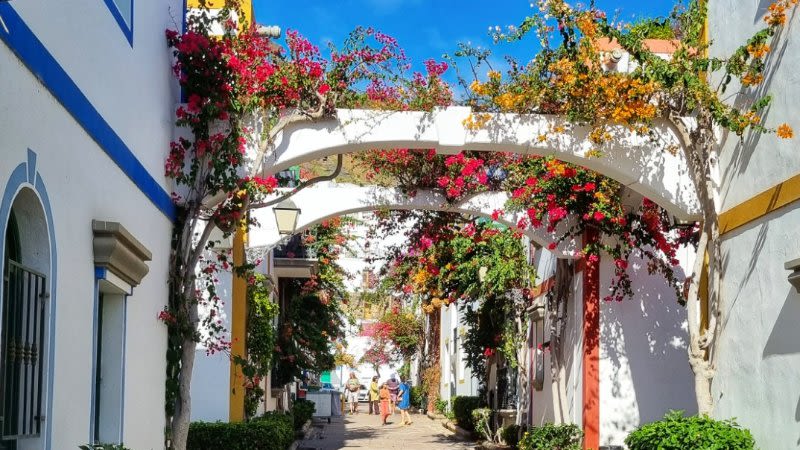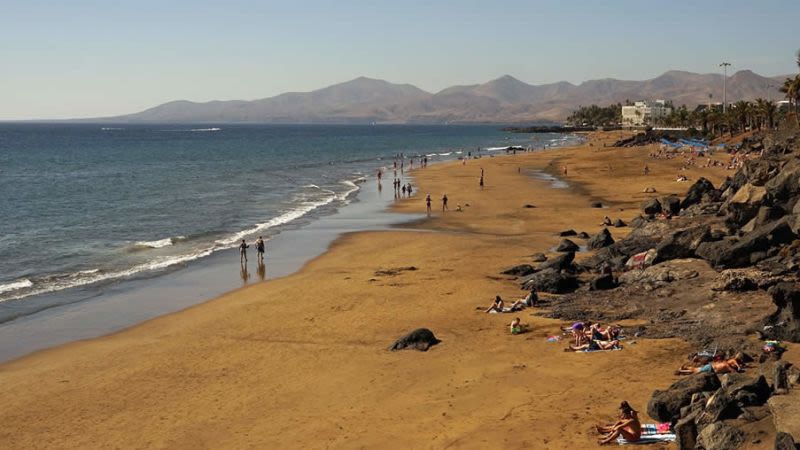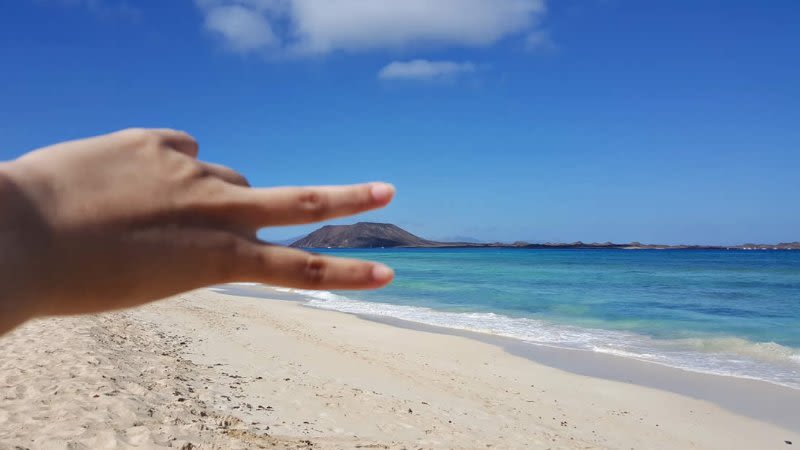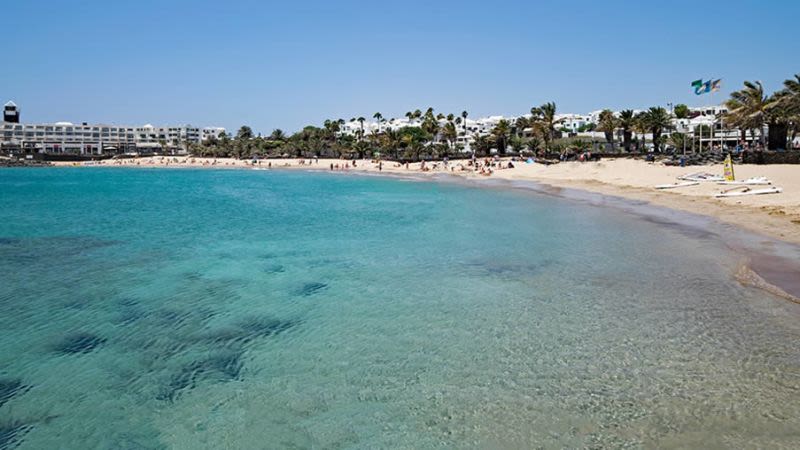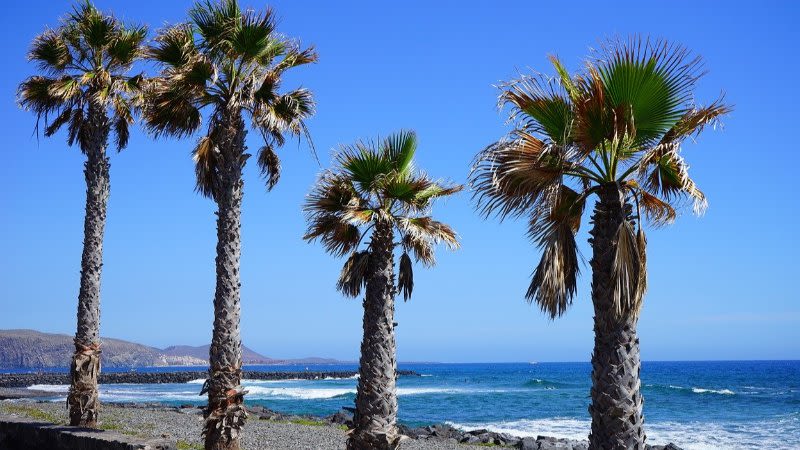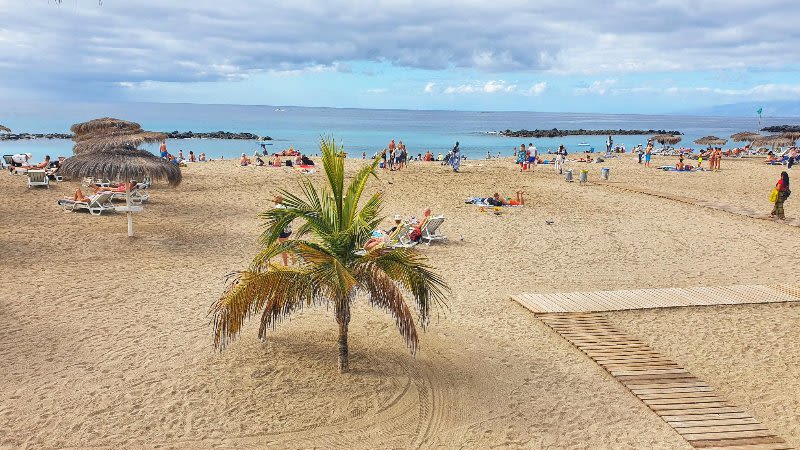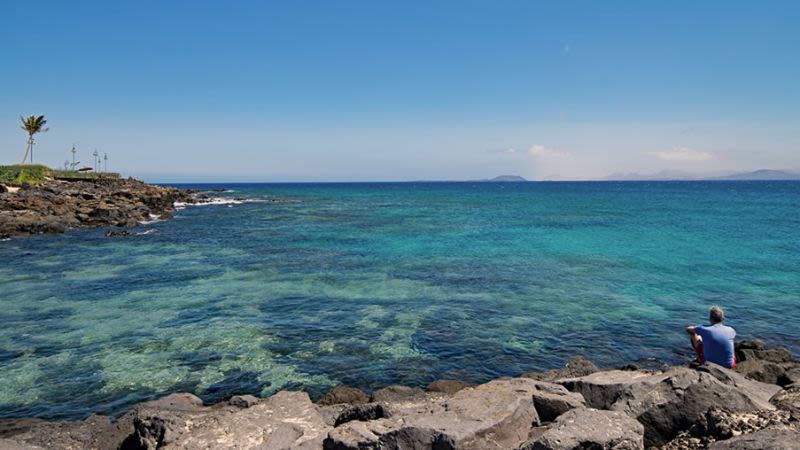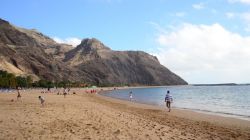Tenerife giant lizard, a unique species in the world
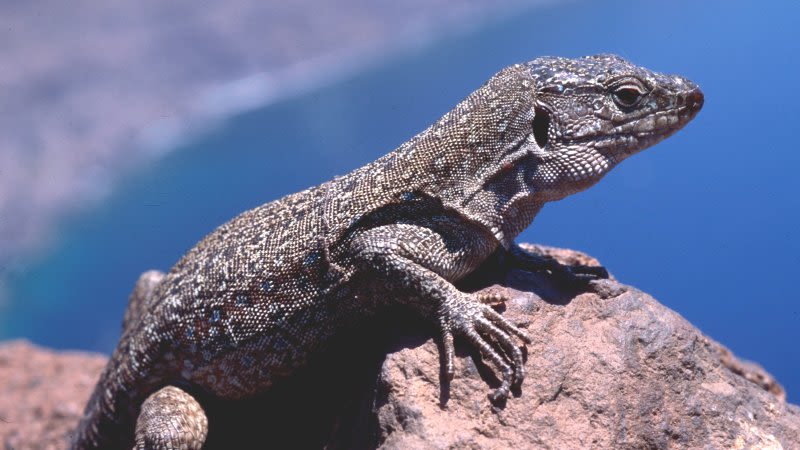
The species "Gallotia intermedia", endemic to Tenerife and unique in the world, was believed to be extinct until the 90s and currently only survives in the Teno massif and the Guaza mountain (Arona).
The Cabildo de Tenerife, through the area of Natural Environment and Security, works for the dissemination and protection of the giant lizard of Tenerife, a unique species in the world that was believed to be extinct.
"Gallotia intermedia" is an impressive reptile of more than half a meter in length. Although in the past it lived throughout the island as is shown by its fossil remains, today it is highly threatened and only survives in the marine cliffs of two protected natural areas from Tenerife: the Teno Rural Park and the Guaza Mountain Natural Monument, which are more than 30 kilometers apart.
The Cabildo, in addition to the work of the biodiversity area, gives special importance to carrying out informative actions to inform citizens of the existence of this species in order to gain support and involvement for its protection.
Tenerife giant lizard - Gallotia intermedia
At the end of the 20th century, in 1996, when it was believed that all the vertebrate species that lived in Tenerife were known, a team of naturalists observed the giant lizards on the Teno cliffs.
This species is a survivor of the original fauna of the Canary Islands, an exclusive species to the island of Tenerife, that is nowadays in danger of extinction. So as a consequence, if this species disappears from Tenerife due to the lack of proper management and protection, it will disappear from the planet.
Appearance and biology
Gallotia Intermedia is brightly colored and its skin distinguishable due to the yellow spots, which are denser in juveniles. It can reach half a meter in length, while its long tail is yet another characteristic. Males differ from females by displaying robust heads.
It is an omnivorous species. They essentially feed on leaves and fruits. They also capture some insects and take advantage of the remains of food generated by the colonies of gulls.
In early summer, females dig galleries up to half a meter deep in sandy soils where they deposit around half a dozen eggs. After two months, lively lizards will be born that must face a multitude of threats. The young lizards must be very careful not to end up being eaten by the adults, who are very voracious. They reach adult age at four years old and they can live to be up to forty years.
Where to find the giant lizard in Tenerife (Gallotia intermedia)
In the past, the giant lizard lived on almost the entire island, from the coast to the summit, like is suggested by the fossils which were found around Tenerife. However, today it occupies less than 0.5% of the surface of what was its original distribution.
They only survive on the sea cliffs of two protected natural areas in Tenerife: the Teno Rural Park and the Guaza Mountain Natural Monument. In both locations, the lizards survive in small-area enclaves.
This reptile shares its habitat on the cliffs with other endangered species of Canarian fauna and flora that also take refuge in them. Teno hosts the last pairs of Guincho or osprey from Tenerife. Its huge nest, which can exceed two meters in height, is visited by lizards in search of waste. On the neighboring platforms grows the precious Guergues immortelle, exclusive to Teno.
In Guaza, they have the Barbary falcon as a neighbor, which does not pose a threat because it is a raptor specialized in catching birds. It is considered the fastest bird on the planet, reaching speeds of 300 kilometers per hour.
The Canary Islands are home to 7 species of lizards
Seven species of lizards reside in the Canary Islands, which come by evolution from an ancient species that arrived in the Canary Islands from Africa more than fifteen million years ago, when Fuerteventura and Lanzarote, the oldest islands in the archipelago, had just emerged from the sea. Once established in the eastern islands, this group of lizards began a journey, of many millions of years, that led them to colonize the other islands.
At present, in the Canary Islands, there are four species of giant lizards that live on the islands of Gran Canaria, Tenerife, La Gomera and El Hierro; although it is likely that another large species survives on inaccessible cliffs of La Palma, of which we know only due to the fossils found in the area.
The giant lizards of El Hierro, La Gomera and Tenerife were discovered recently, at the end of the 20th century, and they are all in danger of extinction.
How are these lizards different from one another?
The one from Gran Canaria has a brown back and orange throat, the one from El Hierro shows yellow spots on the sides, while the one from La Gomera has blue spots on the flanks.
The Tenerife giant lizard shares its habitat with its "younger brother" the smut lizard, which is very common and widely distributed throughout the island, from the coast to the summit. Although they coexist in some places, in general, the giant lizard survives on cliffs, where it climbs easily, while the smut lizard prefers less rugged terrain. The latter becomes an adult in just two years, half the time of the giant, and its life expectancy is about ten years.
The challenge of conserving the unique Tenerife giant lizard
The giant lizard of Tenerife is in danger of extinction.
Some of the main factors that threaten this species are the increase in new constructions on the limits of the Guaza mountain, more people venturing out into the area and the presence of cats, which are their greatest threat. Rats and birds are also a threat as they eat their eggs and attack the newborn specimens. On the other hand, the rabbit feeds on the same plants that the lizard eats.
In order to adopt the necessary conservation measures to prevent, mitigate or cancel these threats, which could lead to the extinction of the species in a few decades, in 2017 the Recovery Plan for the Giant Lizard of Tenerife was approved (Decree 230 / 2017, of November 20). The Plan establishes 6 critical areas (5 in Teno and 1 in Guaza) in which a specific use regime is regulated aimed at favoring the recovery of the Gallotia intermedia populations.
The execution of the measures and lines of action included in the plan will help with the conservation of this species so emblematic for the island of Tenerife.
Photo source & information resource:
- Best Apartments in Tenerife: Kn Aparthotel Columbus (Playa de Las Americas) • Aparthotel Los Dragos del Sur (Puerto Santiago)
- Popular hotels in Tenerife: H10 Costa Adeje Palace 4* (Costa Adeje) • Iberostar Bouganville Playa 4* (Playa de Las Americas) • Barceló Santiago (Puerto Santiago)
- Luxury 5* hotels in Tenerife: Adrián Hoteles Roca Nivaria (Adeje) • Vincci Selección La Plantación del Sur (Adeje)
- See our dedicated guide for the best places to stay in Tenerife.
- Best Excursions & Tours: Whale & Dolphin Watching with Drinks & Snacks • Loro Parque Entry Ticket and Shows


